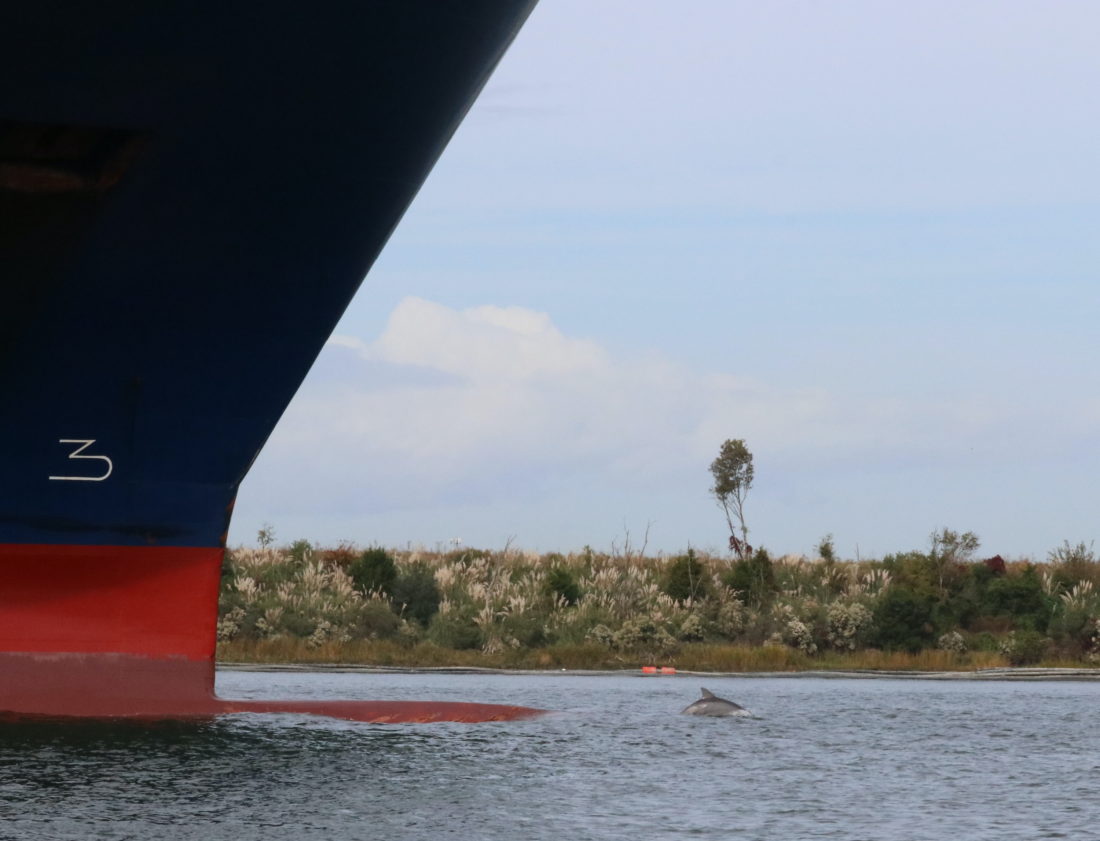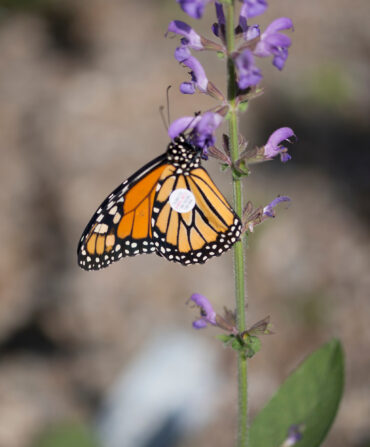When Meghan Galipeau was ten, she knew she wanted to be a marine biologist or an aquatic animal trainer. Now, as a dolphin researcher and educator at the South Carolina Aquarium, she gets the best of both worlds. Galipeau devotes her days to studying Charleston’s own resident bottlenose dolphins in the harbor outside of her office window, examining the mammals’ unique behaviors in local waters—including a rarely documented hunting technique called shipside feeding.
The first sighting of the animals’ unusual strategy was a happy accident: “We were actually studying the effect of dredging on marine habitats,” Galipeau says. “When we were out on the water, we started to notice dolphins whenever there was a docked vessel at a terminal or on the Wando River. We only see ships from above, but beneath the water, there’s a giant wall. And the dolphins were corralling fish against the massive surfaces of docked commercial ships, swimming up and down the sides, chasing fish.”
Marine biologists have documented Charleston’s dolphins and their localized hunting tactics, especially strand feeding (another form of barrier feeding), at length. In the Lowcountry marshes, dolphins drive themselves onto the shore, ‘stranding’ their bodies as they pursue prey against a hard surface. The impressive and complex group technique, which mothers teach their calves, is rarely seen in other parts of the world.
“They’re a very adaptive species. Anywhere where dolphins are studied, there is documentation of specialized feeding strategies,” Galipeau says. Her team’s shipside feeding discovery highlights how these animals have adapted to a non-natural, urbanized environment heavily influenced by human industry. “The Charleston harbor is city-living for dolphins. It has so much boat traffic from all of the shipping and fishing vessels, but the dolphins have figured out a way to utilize their environment to get fish the most effective way.”

Before Galipeau’s research, barrier feeding had never been documented on a commercial shipping vessel. While the team initially set out to document the ecosystem disturbances caused by dredging, they were able to create their own small subset of data on shipside feeding during their survey. By centering their research around six sites, including ship terminals in the Wando River and Charleston Harbor, Galipeau and her team were able to safely approach the dolphins and snap long-range photos with a special scientific research permit.
Though Galipeau has taken plenty of pictures, she’s still left with a lot of questions, including how dolphins learn the shipside feeding strategy. While dolphins are known for social transmission of behavior, especially in strand feeding, the aquarium’s research isn’t extensive enough to prove the shipside feeding technique is taught to offspring. “We don’t have a lot of data for this yet, but we did notice a lot of mom and calf pairs together.” The team recorded thirty-four mothers and calves in action against large vessels. They also noticed some, but certainly not all, of the shipside feeders were known strand feeders.
“So much more can be done to understand this behavior, and hopefully we can open up the doors for more research,” Galipeau says. “I’m always continually impressed by bottlenose dolphins and the way they adapt to their environment. There’s a reason they’re found in every ocean in the world—whether the water is deep or shallow, high or low salinity, they can make anything work.”








